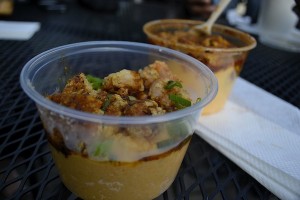I DON’T KNOW IF IT’S thanks to the Food Network or if I just never noticed it until I moved to Seattle, but food trucks seem to be real-life-trending right now. And why not – small facilities, a new location and customer base every day, and foodies flock to you.
For those with a love of cooking, an entrepreneurial spirit, and close proximity to a city, starting a food truck might seem like a great way to break free. So how different could it be from opening an actual restaurant? Honestly, I had no clue – but I live in a city with a pretty rockin’ mobile food scene, so I talked with Kamala Saxton of Marination Mobile and Matthew Lewis of Where Ya At Matt to learn more about street vendorhood and the steps it takes to get there.





